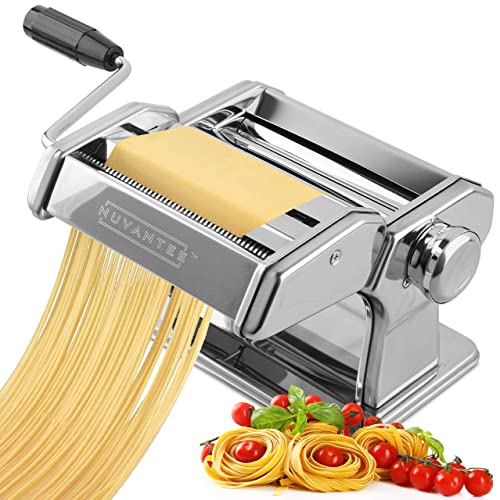Yes, you can use a pasta machine to make gluten-free pasta!
If you’re following a gluten-free diet, you may be wondering if you can still enjoy homemade pasta. The good news is that with the right ingredients and a pasta machine, you can make delicious gluten-free pasta in the comfort of your own kitchen. Here’s everything you need to know about using a pasta machine to make gluten-free pasta.
Choosing the right gluten-free flour
When making gluten-free pasta, the key is to use a flour that does not contain gluten. This means you’ll need to look for alternatives to wheat flour, such as rice flour, quinoa flour, or chickpea flour. These flours can be found at specialty grocery stores or online. It’s important to note that different gluten-free flours have different textures and flavors, so you may need to experiment with a few different types to find the one that works best for you.
Mixing and kneading the dough
Once you have your gluten-free flour, you’ll need to mix it with other ingredients to create the pasta dough. A basic recipe for gluten-free pasta dough typically includes flour, eggs or egg substitute, water, and a pinch of salt. You can find specific recipes online that cater to gluten-free diets. To mix the dough, start by combining the flour and salt in a large mixing bowl. Make a well in the center of the flour and add the eggs or egg substitute, as well as the water. Use a fork or your hands to gradually mix the wet and dry ingredients together until a sticky dough forms. Once the dough is mixed, transfer it to a floured surface and knead it for a few minutes until it becomes smooth and elastic.
Rolling out the dough with a pasta machine
After kneading the dough, it’s time to roll it out using a pasta machine. A pasta machine is a kitchen tool that helps you flatten and shape the pasta dough into thin sheets. To use a pasta machine, start by dividing the dough into smaller portions. Flatten one portion with your hands and dust it with flour to prevent sticking. Adjust the pasta machine to the thickest setting and feed the dough through the machine. Fold the dough into thirds and repeat this step a few times, until the dough is smooth and even. Gradually decrease the thickness setting on the pasta machine and continue rolling out the dough, folding and rolling several times at each thickness setting, until you reach your desired thickness. Once the dough is rolled out, you can cut it into your desired pasta shape, such as fettuccine or spaghetti, using the machine’s cutting attachments.
Cooking and enjoying your gluten-free pasta
Now that your gluten-free pasta is rolled out and cut, it’s ready to be cooked! Bring a large pot of water to a boil and add a generous amount of salt. Carefully add the pasta to the boiling water and cook for a few minutes, or until the pasta is al dente. Remember, gluten-free pasta tends to cook faster than regular pasta, so keep an eye on it to avoid overcooking. Once the pasta is cooked, drain it in a colander and toss it with your favorite sauce or ingredients. Gluten-free pasta pairs well with a variety of sauces, such as tomato sauce, pesto, or a simple olive oil and garlic sauce. Serve your gluten-free pasta immediately and enjoy!
In conclusion, using a pasta machine to make gluten-free pasta is definitely possible. By choosing the right gluten-free flour, mixing and kneading the dough, rolling it out with a pasta machine, and cooking it properly, you can enjoy homemade gluten-free pasta that is just as delicious as the traditional version. So go ahead and dust off that pasta machine and start enjoying a gluten-free pasta feast!






